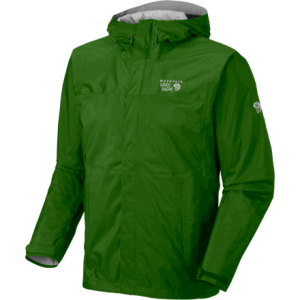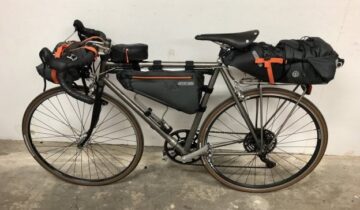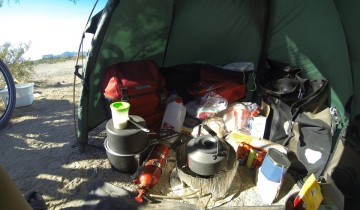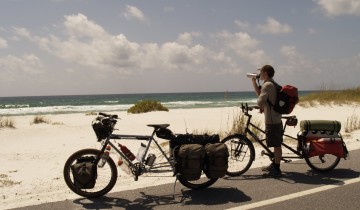What to Pack for an Extended Bicycle Tour – 3 Seasons
Here is a short list of essential items I take on long bicycle tours. These clothes work good for anything from a one week trip to an excursion of several months. It is easy to over pack so consider each piece of clothing carefully and choose wisely. 🙂
- 1 Waterproof Rain Jacket with Hood. An oversized hood for use with a helmet is a good feature as well as a breathable fabric i.e. Gore Tex or Dry Q Core
- 1 heavy weight merino wool jersey with long sleeves such as the Surly or one from Rivendell.
- 1 light weight merino wool jersey, short sleeve such as the products from Smartwool
- 2 Sleeveless or short sleeve synthetic jerseys with full zips. Fabric wicks away moisture.
- 1 or 2 pair of shorts with cargo pockets.
- 1 or 2 pair of nylon sports underwear such as Starter Dri-Star Compression products. (I call these “stretchy pants”) This fabric wicks away moisture and prevents saddle sores.
- Some people prefer specialized cycling shorts with built in padded under shorts. A couple pair of these will replace the items (5 & 6).
- 1 pair of long pants for street use when off the bike.
- Comfortable riding shoes with 2-3 pair of ankle socks or a good pair of riding sandals.
- 1 Wool cap
- 1 lightweight fiberfill jacket or a down vest which also doubles as a great pillow.
By layering these items of clothing in different combinations, you can stay comfortable in any weather short of extreme sub-zero temperatures. The tendency is to take more clothing than is needed but the ounces add up fast in the area of clothing. Remember, it is always possible to purchase additional “street clothes” locally if needed for a specific purpose so go light in the beginning.
Depending on the conditions and what clothes you are choosing to wear daily, the remaining items will usually weigh-in at less than 5 pounds. These items can easily fit into one small 12.5 liter front pannier.
NOTE on Merino Wool: Merino is common in performance athletic wear. It is one of the softest wools available and feels more like cashmere against the skin plus it has an excellent warmth-to-weight ratio. Merino wool garments feel cool in warm weather and warm in cool weather due to the inherant moisture wicking properties. The wool also has antibacterial properties so it doesn’t collect odors from sweat as easily as cotton or synthetics. Merino wool layers well with other garments. For instance, on a cool and damp day you may choose to wear a heavy merino wool baselayer with a breathable rain shell as an over jacket.






I like your philosophy on clothing. Your choices are minimal, thorough, and will keep you cozy and safe on light weight tours, which I feel should be everyone’s goal. I like to find alternatives to expensive gear, however, and use clothing options that are much cheaper, though, essentially the same. My local second hand store supplies me with virtually 80% of my clothing for cycling and backpacking at a fraction of the cost. But the importance of your recomended garments is spot on. Glad to know I’m doing some things right :o)
Thanks for the comment Johnny. You are right about alternatives. I just found a great hooded windbreaker by Starter at Walmart on sale for only $12 which is almost as waterproof as the Mountain Hardware Epic model at 1/10 the price. Sometimes wool garments like Pendleton’s can be found in second hand stores for a song. If you have the time, these are good resources. I have found that quality garments seem to last me for years so the price is somewhat justified. A lot depends on the length of your journey when deciding on how much to invest in technical clothing.